Succulents have become increasingly popular in recent years, and it’s no wonder why. These unique plants are not only visually appealing with their vibrant colors and interesting shapes, but they are also incredibly versatile when it comes to potting projects. Whether you’re a seasoned gardener or a beginner looking to try your hand at some indoor gardening, succulents are a great choice.
One of the benefits of succulent potting projects is the stress relief they can provide. Gardening has long been known to have therapeutic effects, and working with succulents is no exception. The act of potting and caring for these plants can help reduce stress and anxiety, providing a sense of calm and relaxation. Additionally, having plants indoors has been shown to improve air quality by reducing toxins and increasing oxygen levels.
Choosing the Right Pot for Your Succulent
When it comes to choosing the right pot for your succulent, there are a few factors to consider. First and foremost, you’ll want to make sure the pot is the appropriate size for your plant. Succulents have shallow root systems, so a pot that is too large can lead to overwatering and root rot. On the other hand, a pot that is too small can restrict root growth and cause the plant to become root-bound.
Another important consideration is drainage holes. Succulents require well-draining soil, so it’s crucial that excess water can easily escape from the pot. Look for pots with drainage holes in the bottom or consider drilling your own if necessary. If you find a pot that you love but it doesn’t have drainage holes, you can create a false bottom using rocks or pebbles to help prevent water from pooling at the bottom.
In terms of material, there are several options to choose from. Ceramic pots are popular for their durability and aesthetic appeal, but they tend to retain moisture more than other materials. Terra cotta pots are a great choice for succulents as they are porous and allow for better airflow and drainage. Plastic pots are lightweight and affordable, but they may not be as aesthetically pleasing.
Soil and Fertilizer Requirements for Succulent Potting
Succulents have unique soil requirements that differ from other houseplants. They need a well-draining soil mix that allows excess water to flow through easily. A good succulent soil mix should consist of a combination of organic matter, such as compost or peat moss, and inorganic matter, such as perlite or pumice. This mixture provides the right balance of moisture retention and aeration for the roots.
When it comes to fertilizing succulents, less is more. These plants are adapted to survive in nutrient-poor environments, so they don’t require frequent feeding. In fact, over-fertilizing can lead to root burn and other issues. It’s best to use a balanced, slow-release fertilizer specifically formulated for succulents. Organic options, such as worm castings or seaweed extract, are also a good choice.
Creative Display Ideas for Succulent Potting
Succulents are not only beautiful on their own, but they can also be used to create unique and creative displays. One idea is to use a tiered stand to showcase multiple pots at different heights. This not only adds visual interest but also maximizes space if you have limited room. Another option is to group pots together in various sizes and shapes to create a visually appealing arrangement.
Incorporating succulent pots into your home decor is another way to get creative with your displays. You can place them on windowsills, shelves, or even hang them from the ceiling using macrame hangers. Consider using different types of pots, such as hanging baskets or wall-mounted planters, to add dimension and texture to your space.
DIY Terrariums for Succulent Displays
Terrariums are a popular choice for succulent displays as they provide a controlled environment for the plants to thrive. Creating your own succulent terrarium is a fun and rewarding project that allows you to customize the design to your liking. To start, you’ll need a glass container with a lid, succulent soil mix, and a variety of succulents.
Begin by adding a layer of rocks or pebbles to the bottom of the container to aid in drainage. Next, add a layer of activated charcoal to help filter the air and prevent odors. Then, add a layer of succulent soil mix, making sure it is level and evenly distributed. Finally, plant your succulents, leaving enough space between them for growth.
After planting, water the terrarium lightly and place the lid on top to create a humid environment. Keep the terrarium in bright, indirect light and monitor the moisture levels regularly. If condensation forms on the glass, remove the lid for a short period to allow excess moisture to evaporate. Remember to water sparingly as succulents do not like wet feet.
Vertical Gardening with Succulents
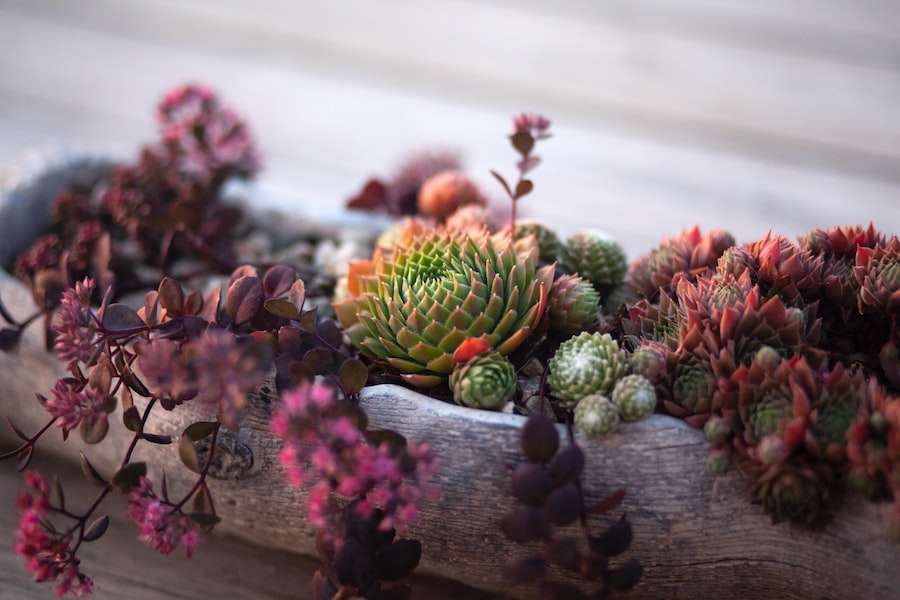
Vertical gardening has gained popularity in recent years as a space-saving solution for those with limited outdoor space. Succulents are perfect for vertical gardens as they are low-maintenance and can thrive in small spaces. Creating a vertical succulent garden is easier than you might think.
To start, select the right plants for your vertical garden. Look for trailing or cascading succulents that will drape down the sides of your structure. Some popular choices include String of Pearls (Senecio rowleyanus), Burro’s Tail (Sedum morganianum), and Donkey’s Tail (Sedum morganianum). You’ll also need a vertical structure to hold the plants, such as a trellis, pallet, or wall-mounted planter.
Once you have your plants and structure, it’s time to get creative. Arrange the succulents in a way that is visually appealing and allows for proper growth. Make sure to leave enough space between each plant to prevent overcrowding. Secure the plants to the structure using floral wire or plant ties, being careful not to damage the roots.
Succulent Wall Art: Creating Living Masterpieces
Succulent wall art has become a popular trend in recent years, and it’s easy to see why. These living masterpieces add a unique and eye-catching element to any space. Creating your own succulent wall art is a fun and rewarding project that allows you to showcase your creativity.
To start, you’ll need a frame or shadow box that is deep enough to accommodate the succulents. You can purchase a pre-made frame or make your own using wood or other materials. Next, line the frame with chicken wire or mesh to create a barrier between the soil and the frame. This will help prevent soil from falling out while still allowing for proper drainage.
Once your frame is ready, fill it with succulent soil mix, making sure it is level and evenly distributed. Then, carefully plant your succulents, leaving enough space between them for growth. You can arrange them in any pattern or design you like, but make sure they are securely rooted in the soil.
After planting, water the succulents lightly and allow them to settle in for a few days before hanging the frame on the wall. Keep the succulent wall art in bright, indirect light and water sparingly as needed. Over time, the succulents will grow and fill in the frame, creating a stunning living masterpiece.
Repurposing Containers for Succulent Potting
If you’re looking for a unique and creative way to display your succulents, consider repurposing everyday items as pots. Not only is this a great way to reduce waste and give new life to old items, but it also adds a personal touch to your succulent displays.
Teacups and mason jars are popular choices for repurposing as succulent pots. They add a whimsical and vintage feel to any space. To repurpose a teacup, simply fill it with succulent soil mix and plant your succulent. Make sure to create drainage holes in the bottom of the cup to prevent water from pooling.
Mason jars can be used as hanging planters or tabletop displays. To create a hanging planter, attach wire or twine around the neck of the jar and hang it from a hook or ceiling. For a tabletop display, fill the jar with succulent soil mix and plant your succulent. You can also add decorative elements, such as rocks or moss, to enhance the visual appeal.
When repurposing containers for succulent potting, it’s important to ensure proper drainage. If the container doesn’t have drainage holes, you can create them yourself using a drill or hammer and nail. This will help prevent overwatering and root rot.
Caring for Your Succulent Display: Maintenance Tips
Caring for your succulent display is relatively easy, but there are a few key things to keep in mind. First and foremost, succulents require bright, indirect light to thrive. Place them near a window where they can receive at least six hours of sunlight per day. If you notice your succulents stretching or becoming leggy, it may be an indication that they are not receiving enough light.
When it comes to watering, succulents have unique needs compared to other houseplants. They prefer to be watered deeply but infrequently. Allow the soil to dry out completely between waterings, and then water thoroughly until water drains out of the bottom of the pot. Avoid overwatering as this can lead to root rot and other issues.
In terms of temperature, succulents prefer warm conditions but can tolerate a wide range of temperatures. They are generally more tolerant of heat than cold, so it’s important to protect them from frost and freezing temperatures. If you live in a colder climate, consider bringing your succulents indoors during the winter months or providing them with additional protection.
Lastly, keep an eye out for common succulent care issues such as overwatering, pests, and disease. Overwatering is one of the most common problems with succulents and can lead to root rot. If you notice your succulents becoming mushy or discolored, it may be a sign of overwatering. Pests such as mealybugs and aphids can also be a problem, so regularly inspect your plants for any signs of infestation. If you notice any issues, take action immediately to prevent further damage.
Inspiring Your Creativity with Succulent Potting Projects
Succulent potting projects offer endless possibilities for creativity and self-expression. Whether you’re creating a terrarium, vertical garden, or succulent wall art, there are so many ways to showcase these unique plants in your home or outdoor space. Not only do succulents add beauty and visual interest, but they also provide numerous benefits such as stress relief and improved air quality.
So why not give succulent potting projects a try? Whether you’re a seasoned gardener or a beginner looking to try something new, there’s no better time to get started. With their low-maintenance nature and wide range of options for display, succulents are the perfect choice for any indoor gardening project. So go ahead and let your creativity flourish with succulent potting projects. You won’t be disappointed.
If you’re looking for more creative ideas to display your succulents, check out this article on “6 Stunning Outdoor Succulent Plants to Elevate Your Garden Design.” It provides inspiration and tips on how to incorporate succulents into your outdoor space, creating beautiful and unique displays. From vertical gardens to hanging baskets, this article offers a variety of creative ways to showcase your succulent collection. Whether you have a small balcony or a spacious backyard, these ideas will help you transform your outdoor area into a stunning succulent oasis. Read more
FAQs
What are succulent potting projects?
Succulent potting projects are DIY ideas for creating unique and creative displays using succulent plants. These projects involve planting succulents in various containers, such as pots, jars, and even teacups, to create beautiful and low-maintenance arrangements.
What are some benefits of succulent potting projects?
Succulent potting projects offer several benefits, including the ability to create beautiful and unique displays, the opportunity to exercise creativity, and the low-maintenance nature of succulent plants. Succulents are also known for their air-purifying properties and can help improve indoor air quality.
What types of containers can be used for succulent potting projects?
Succulent potting projects can be done using a variety of containers, including pots, jars, teacups, and even old shoes or boots. The key is to choose a container that is the right size for the succulent plant and has proper drainage.
What types of succulent plants are best for potting projects?
There are many types of succulent plants that are suitable for potting projects, including echeveria, sedum, haworthia, and crassula. These plants are known for their low-maintenance nature and ability to thrive in a variety of conditions.
What are some tips for caring for succulent plants in potting projects?
To care for succulent plants in potting projects, it is important to provide them with proper drainage, as succulents are susceptible to root rot. They also require well-draining soil and should be watered sparingly, as overwatering can be harmful. Succulents also thrive in bright, indirect sunlight and should be kept in a warm, dry environment.








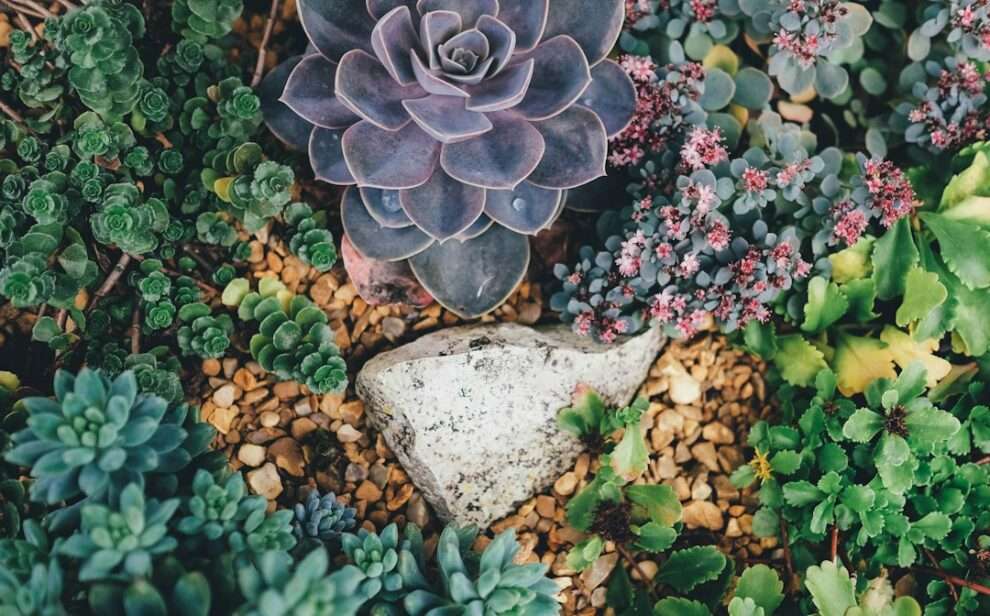
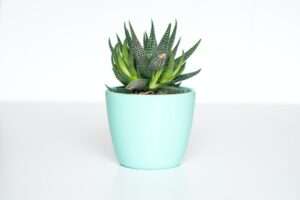
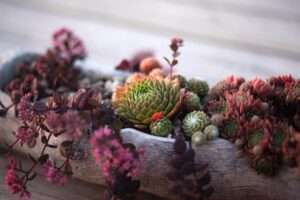



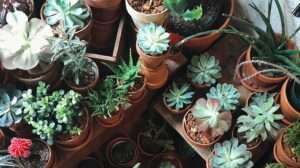


Add Comment